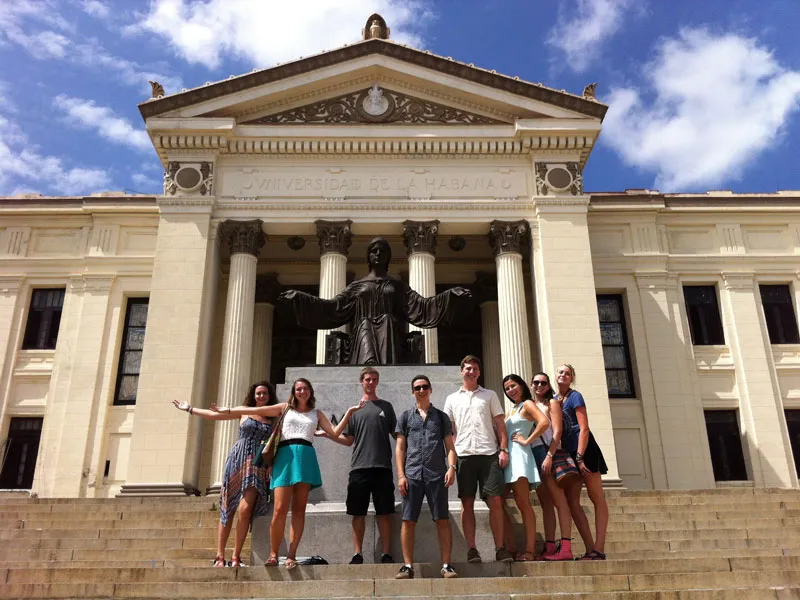
8:15 a.m. October 29, 2015, Villa Santo Domingo, La Plata, Cuba: We begin the hike to the rustic headquarters high in the Sierra Maestra where the Castro brothers, Ernesto "Che" Guevara and other revolutionary leaders developed the strategies that carried them to the victorious overthrow of Fulgencio Batista's regime in early 1959. Some of the eight undergraduate students spending their fall semester in Cuba are full of energy and bound ahead on the trail to ask our local guide a question about flora, fauna, or national history. Others are less enthusiastic about the climb, and bemoan their lack of athleticism. The panoramic views at the top, along with the chance to see where a key chapter of 20th century Latin American history took place, make it all worthwhile.
Afterward, we continue our journey across the island, stopping at other landmarks of Cuba's complex revolutionary past and present. The striking Monument to the Runaway Slave at El Cobre, and the huge bronze plaques at San Juan Hill listing the names of the U.S. and Cuban soldiers who fought together to free Cuba from Spanish colonial rule, are just two of the sites we visit before ending our field trip in Baracoa, where Christopher Columbus planted a cross and declared Cuba "the most beautiful land that human eyes have ever seen." These forays outside Havana served as a welcome complement to the courses Jaclyn Cole, Robert Kellner, Samantha Macarthur, Julia Mudd, Jonathan Rizner, Danielle Roof and Allison Scribe were taking at the University of Havana with Cuban professors and peers, as well as the interdisciplinary course we were all engaged in together, dedicated to the inexhaustible topic of Havana itself. Meeting twice a week to discuss a rich panoply of architecture, music, literature, urban studies, journalism, art, history, and, of course, politics--including the recent changes in U.S.-Cuban diplomatic and economic relations--helped us all to appreciate the cultural wealth around us and to more fully recognize Cuba's vital role in the past, present, and future of the Americas.

